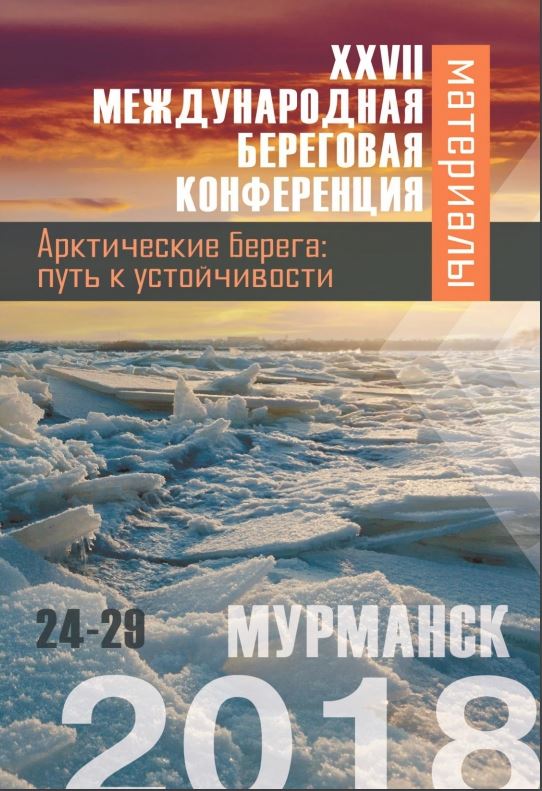Россия
Россия
BISAC NAT010000 Ecology
BISAC NAT045050 Ecosystems & Habitats / Coastal Regions & Shorelines
BISAC NAT025000 Ecosystems & Habitats / Oceans & Seas
BISAC NAT045030 Ecosystems & Habitats / Polar Regions
BISAC SCI081000 Earth Sciences / Hydrology
BISAC SCI092000 Global Warming & Climate Change
BISAC SCI020000 Life Sciences / Ecology
BISAC SCI039000 Life Sciences / Marine Biology
BISAC SOC053000 Regional Studies
BISAC TEC060000 Marine & Naval
На основе предположения многих исследователей, глобальное потепление и антропогенные факторы, такие как загрязнение окружающей среды, транспортировке и торговле, а также инвазионизму, lessepsianism, endangerism эффект негативно и будет продолжать действие Водного населения и их существование в экосистемах и связанных с ними местообитаний. Таким образом, можно констатировать, что потепление климата и антропогенные факторы, безусловно, приведут к вымиранию некоторых водных организмов, а также видов рыб в конечном итоге к 2080 или 2100 году. С учетом экономических последствий утраты некоторых видов рыб следует принять решение о создании новых районов рыболовства для удовлетворения текущих потребностей человека и пищевой промышленности. В данной работе с использованием данных различных докладов были рассмотрены последствия глобального потепления, природные и антропогенные факторы, влияющие на водную жизнь.
глобальное потепление, изменение климата, биологическое разнообразие, антропогенные факторы
1. Porter, EM., Bowman, WD., Clark, CM., Compton, JE., LH P., JL S., 2013. Interactive effects of anthropogenic nitrogen enrichment and climate change on terrestrial and aquatic biodiversity. Biogeochemistry. 114: 93- 120.
2. Mostofa, K.M.G., Liu, C.Q., Gao, K., Vione, D., Ogawa, H., 2012. Challenges and solutions to marine ecosystems (Invited Speaker). In: Proceedings of BIT’s 2nd Ann. World Cong. of Mar. Biotech., Sep. 19e 23, Dalian, China.
3. Vidal-Dorsch, D.E., Bay, S.M., Maruya, K., Snyder, S.A., Trenholm, R.A., Vanderford, B.J., 2012. Contaminants of emerging concern in municipal wastewater effluents and marine receiving water. Envir. Toxic. and Chem. 31: 2674-2682.
4. Rooker, J.R., Secor, D.H., De Met rio, G., Schloesser, R., Block, B.A., Neilson, J.D., 2008. Natal homing and connectivity in Atlantic bluefin tuna populations. Science, 322:742-744.
5. Srinivasan, U.T., Cheung, W.L., Watson, R., Sumaila, U.R., 2010. Food security implication of global marine catch losses due to overfishing. Journal of Bioeconomics. 12: 183-200.
6. Brander, KM., 2007. Global fish production and climate change. Proceedings of The National Academy of Sciences of the United States of America. 104: 19709-19714. DOI:https://doi.org/10.1073/pnas.0702059104
7. Altaf M., Javid A., Khan A.M., Hussain A., Umair M., Ali Z., 2015. The status of fish diversity of River Chenab, Pakistan The Journal of Animal & Plant Sciences, 25: 564-569
8. Hyde, KD., Fryar, S., Tian., Q., Bahkali, AH., Xu, JC., 2016. Lignicolous freshwater fungi along a north-south latitudinal gradient in the Asian/Australian region; can we predict the impact of global warming on biodiversity and function. Fungal Ecology. 19:190-200.
9. O'Gorman, EJ., Benstead, JP., Cross, WF., Friberg, N., Hood, JM., Johnson, PW., Sigurdsson, BD., Woodward, G., 2014. Climate change and geothermal ecosystems: natural laboratories, sentinel systems, and future refugia. Global Change Biology. 20: 3291-3299. DOI:https://doi.org/10.1111/gcb.12602.
10. Moiseenko, TI., Sharov, AN., Vandish, OI., Kudryavtseva, LP., Gashkina, NA., Rose, C., 2009. Long-term modification of Arctic lake ecosystems: Reference condition, degradation under toxic impacts and recovery (case study Imandra Lakes, Russia). Limnologica. 39: 1-13.
11. Janssens, L., Dinh Van, K., Stoks, R., 2014. Extreme temperatures in the adult stage shape delayed effects of larval pesticide stress: A comparison between latitudes. Aquatic Toxicology. 148: 74-82.
12. Sepulveda-Villet, OJ., Stepien, CA., 2012. Waterscape genetics of the yellow perch (Perca flavescens): patterns across large connected ecosystems and isolated relict populations. Molecular Ecology. 21: 5795- 5826.
13. Pilas, I., Planinsek, S., 2011. The Reconstruction of the Water Regime in Lowland Forests in Support of Sustainable Man. Sumarski List. 135: 138- 148.
14. Verberk, WCEP., Bilton, DT., Calosi, P., Spicer, JI., 2011. Oxygen supply in aquatic ectotherms: Partial pressure and solubility toget her explain biodiversity and size patterns. Ecology. 92: 1565-1572.
15. Maazouzi, C., Piscart, C., Legier F., Hervant, F., 2011. Ecophysiological responses to temperature of the «killer shrimp» Dikerogammarus villosus: Is the invader really stronger than the native Gammarus pulex. Comparative Biochemistry and Physiology A-Molecular & Integrative Physiology. 159: 268-274. DOI:https://doi.org/10.1016/j.cbpa.2011.03.019.
16. Kolicka, M., Dziuba, MK., Zawierucha, K., Kuczynska-Kippen, N., Kotwicki, L., 2015. Palm house - biodiversity hotspot or risk of invasion? Aquatic invertebrates: The special case of Monogononta (Rotifera) under greenhouse conditions. Biologia. 70: 94-103. DOI:https://doi.org/10.1515/biolog-2015-0012.
17. Jenny, JP., Arnaud, F., Alric, B., Dorioz, JM., Sabatier, P., Meybeck, M., Perga, ME., 2014. Inherited hypoxia: A new challenge for reoligotrophicated lakes under global warming. Global Biogeochemical Cycles. 28: 1413-1423.
18. Huerta-Ramos, G., Moreno-Casasola, P., Sosa, V., 2015. Wetland Conservation in the Gulf of Mexico: The Example of the Salt Marsh Morning Glory, Ipomoea sagittata Wetlands. 35: 709-721.
19. Ashraf, M., Hussain, M., Ahmad, MSA., Al-Qurainy, F., Hameed, M., 2012. Strategies for Conservation of Endangered Ecosystems. Pakistan Journal of Botany. 44: 1-6.






